The Means Test and the Bankruptcy Abuse Prevention and Consumer Protection Act (BAPCPA)
In 2005, Congress passed the Bankruptcy Abuse Prevention and Consumer Protection Act (aka, BAPCPA). The most prevalent change made to the Bankruptcy Code by BAPCPA was the addition of the “Means Test” for Chapter 7 which was intended to push people who have disposable income into a Chapter 13 bankruptcy where that disposable income would be paid to a trustee for 5 years and the trustee would be making periodic payments to creditors.
The intention of the Means Test was to have a mechanical and objective calculation of disposable income that could easily be applied all cases in which a person seeks to file a Chapter 7. The result, however, has been that it has caused what used to be simple Chapter 7 cases to now become extremely complex, even for those people who ultimately do qualify for Chapter 7.
As a starting point, the Means Test looks back at the 6 month period prior to the month in which you file. So if you were to file your case in January, the Means Test would take into account your income from July to December of the previous year.
The Means Test for Below-Median Debtors
If your gross income during this period shows that you are “below-median” as set forth by the United States Trustee’s Office, then you can easily pass for Chapter 7 without having to show any kind of specific budget of disposable income other than the Schedules I and J budget which give a much clearer picture of your financial situation and allows you to include many expenses that are not “allowable” in the Means Test.
The Means Test for Above-Median Debtors
If your gross income over the 6-month period shows that you are above-median, then your case is going to be complex and you are at risk of being forced into a Chapter 13. However, this does not necessarily mean that you are going to be required to file a Chapter 13, it is just going to take much more work to show that you qualify for Chapter 7.
Unlike the test that is applied to below-median debtors and only looks at income, the above-median test also takes into account your expenses. The Means Test includes many expenses that are “regular” for an average household – however, some of these expenses are standardized and some expenses are actual and based on what you are actually paying. For example, as of 11/1/2020, the standardized expense for “food, housekeeping, apparel & services, personal care products and services, and miscellaneous(?)” for a household of 3 is $1,740. There are many other similar standardized expenses. You can also take several actual expense deductions such as taxes, childcare, medical, mandatory retirement contributions, and so on. You must be able to provide proof of these expenses if requested. There are also many normal expenses that are “not allowable” in this calculation, such as entertainment, retirement loan repayments, and really anything that is not specifically mentioned on the Means Test…
If you get through all of this and the end result is a disposable income amount that would not pay a meaningful dividend to creditors, then you pass for a Chapter 7. If the calculation shows that you do have enough disposable income to afford a Chapter 13 plan, then you have two options: 1) file your case under Chapter 13; or 2) “rebut the presumption of abuse”.
Rebutting the Presumption of Abuse
Since the Means Test often does not represent an accurate picture of someone’s financial situation, you may be able to still qualify for Chapter 7 based upon a showing that your actual situation would make you unable to afford a Chapter 13 plan.
There is no specific method of rebutting the presumption, but generally any evidence showing that you have a reasonable budget but an inability to afford a Chapter 13 plan could be useful. For instance, if you have expenses that are absolutely necessary for the health and well-being of your dependents, but those expenses are not taken into account in the Means Test, then these facts will likely help you rebut the presumption.
Whether or not you have successfully rebutted the presumption and can file under Chapter 7 is a determination made by the United States Trustee’s Office. If they believe that you should not be allowed to file under Chapter 7, they will file a motion asking that the court either dismiss your case or convert it to Chapter 13. At this point, you can either dismiss, convert, or continue the fight and oppose the trustee’s motion.
Whether or not trying to rebut the presumption is worth the effort is a serious decision. It can be a long and invasive process that may ultimately prove to be worthless and you are still back to choosing between dismissal and conversion.
Related posts:
- When Is A Good Time To File Your Bankruptcy?
Timing can me an extremely important factor in your case. The most common timing issues... - How often can you file bankruptcy?
What happens if you need to file bankruptcy again? If you have filed a bankruptcy... - The United States Trustee
In short, the US Trustee’s Office is the governmental entity that oversees bankruptcy proceedings. They...









